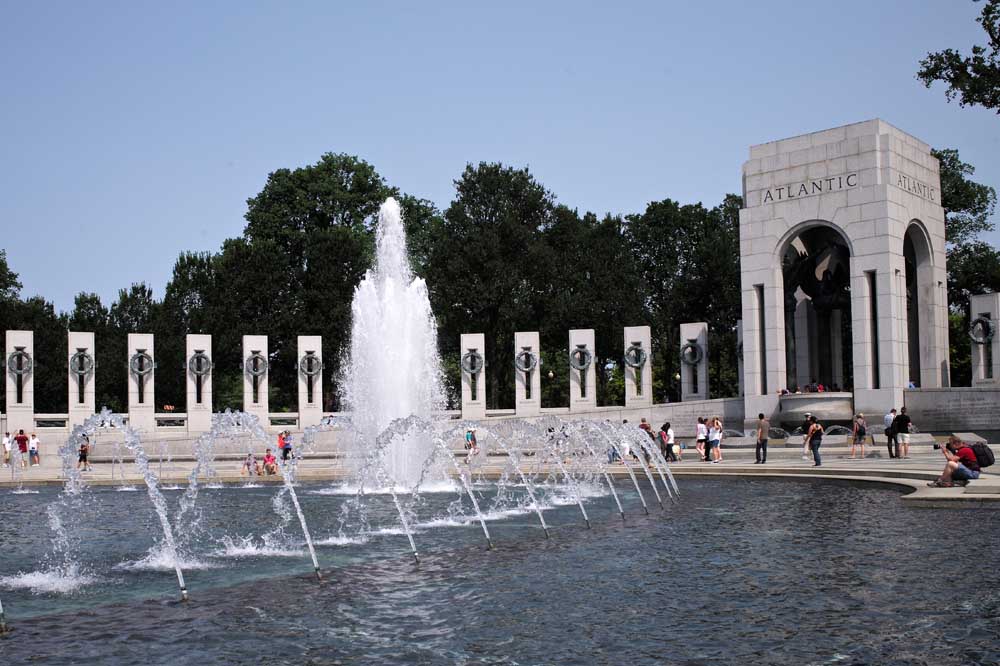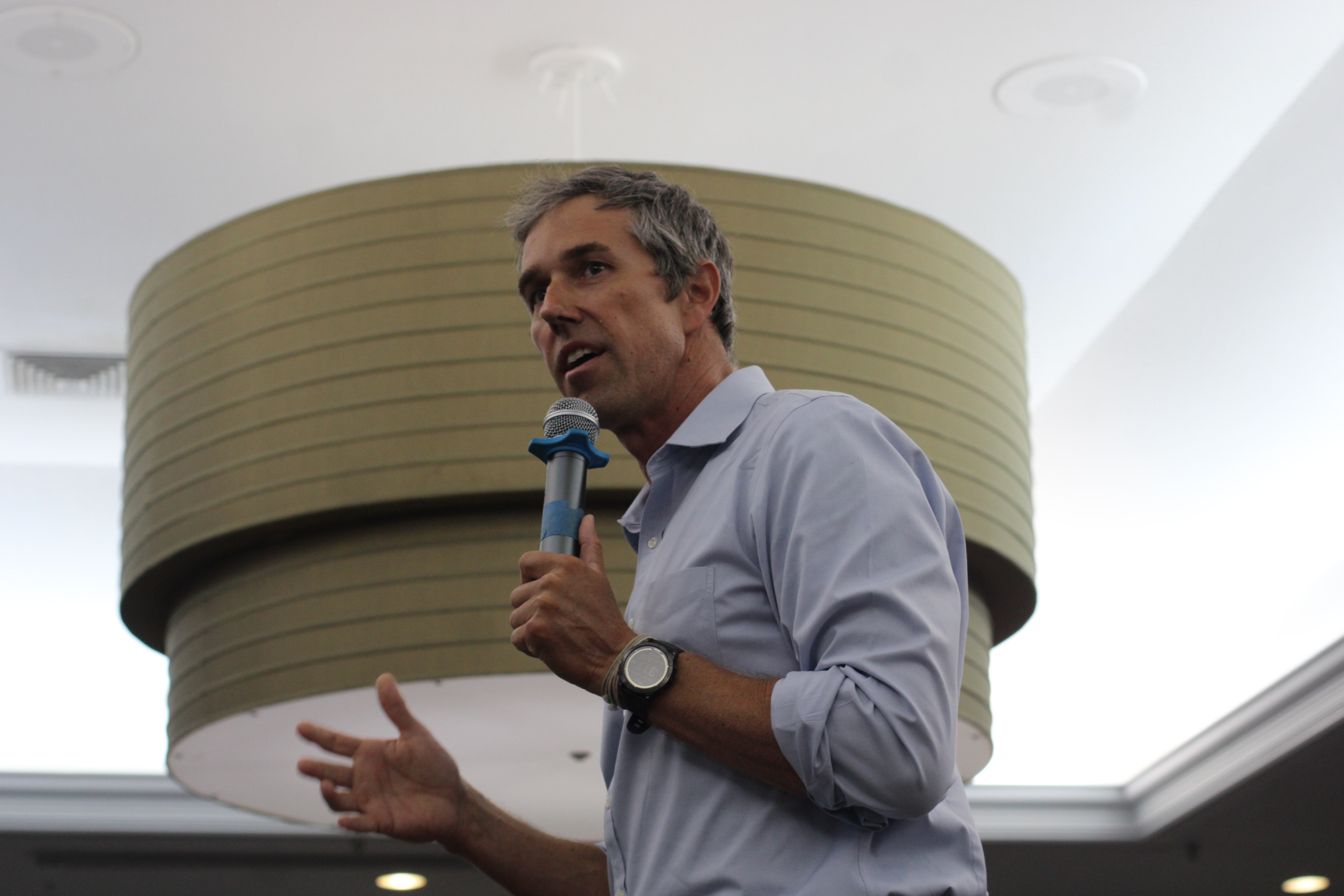Museums, majestic monuments and Capitol Hill make D.C. a one-of-a-kind experience
Published 8:00 am Wednesday, May 1, 2019

- The World War II memorial at Washington D.C. (Courtesy)
In complete awe, I stare at a worn and tattered flag surrounded by masked people resembling surgeons hovering over it. Much larger than I expected, the flag’s story is even larger. I am looking at the flag that inspired Francis Scott Key to write the words that Americans cherish and proudly sing still today.
The flag was on view while it recently was undergoing restoration at the Smithsonian National Museum of American History in Washington, D.C. From dinosaur skeletons to log cabins, this three-story museum alone could consume a day!
Collectively called the Smithsonian Institute, this world-renowned complex of museums, gardens, galleries and monuments is a treasure chest of old and new relics representing the United States’ legacy. Using original funds from British-raised James Smithson, who donated his fortune to the United States of America, Congress passed legislature in the early 19th century to create this incredible establishment.
MUSEUMS
The Smithsonian Institute stretches along a boulevard named appropriately the National Mall. Facilities are within walking distance or a short shuttle ride of one another. Access to most museums and all monuments is free.
I started my exploration of the nation’s capital at the visitor’s center located in the Smithsonian Castle, a copper brick building resembling a medieval castle. Built in 1855, the neo-Gothic structure was the first to be built and where maps or docents are available to help plot out a day of museum-hopping.
Children are not typically museum lovers, but I know they will thoroughly enjoy the Air and Space Museum. From the Wright (Brothers’) Flyer to moon rocks you can touch, this museum contains the most significant collection of aviation and space artifacts in the world.
The front façade of windows creates the feeling that vintage airplanes suspended above my head are flying straight into the sky.
The natural earth-and-stone design of the Museum of the American Indian resembles ripples in a sand dune. Dedicated to “bringing Native voices to life,” the museum is just as beautiful inside, where a large collection of photographs, films and art is gathered.
A wonderful interactive experience for children is at the imagiNATIONS Activity Center. Make plans for lunch at the Mitsitam Native Food Café, which offers delicious fry bread and corn totopos.
The U.S. Bureau of Engraving and Printing is all about money. Founded in 1862, the Bureau produces Treasury securities, military commissions, ID cards and a range of security documents for government agencies. I took the “money factory” tour to learn how money is made and why some coins are considered rare.
There are almost 20 galleries and museums along the National Mall, but don’t miss the Museum of African Art. From intricate mosaics to fishing boats to Haitian sculptures to rare sub-Saharan Africa works, the exhibits follow themes such as myths, metaphors and rituals about how African cultures have influenced the world.
As an avid gardener, I gathered much inspiration at the United States Botanic Garden on Maryland Avenue. Three presidents — Washington, Jefferson and Madison — had a vision of a national botanical garden and worked towards building a place for this amazing collection of plants.
Open to the public continuously since 1820, it also hosts the newer Conservatory comprised of almost 30,000 square feet of blossom heaven. One room is dedicated to orchids.
Nearby is the Bartholdi Park, a two-acre space ideal for resting my sore feet.
MONUMENTS
Located in the center of the National Mall is the Washington Monument, which re-opened in the spring of 2019 after renovations. This slender stone structure honoring America’s first president holds the title of the tallest stone obelisk in the world.
Nearby is the magnificent Lincoln Memorial, which on this day has many visitors standing at the feet of President Lincoln taking family photos .
War memorials are located at the east end of the National Mall. Parking is limited so I suggest taking the War Tour route offered by the D.C. Circulator’s National Mall bus, where you can hop on and off at your discretion.
The World War II Memorial honors the 16 million people who served in the U.S. Armed Forces during this devastating global war. The most striking feature is the water fountain surrounded by the Freedom Wall that displays 4,048 gold stars, each star paying tribute to 100 American lives lost.
The Korean War Veterans Memorial is the most unusual memorial located south of the Reflecting Pool. Instead of a single structure, the memorial is a semi-circle park with numerous life-size sculptured soldiers walking up a hill. National Park Service Rangers are on hand to answer questions.
The Vietnam Veterans Memorial is located north of the Lincoln Memorial. As a young woman during the Vietnam War, I often sent cookies to my boyfriend while he served his country in a jungle thousands of miles from home.
The sleek and shiny wall is inscribed with over 58,000 names of men and women who gave their lives during the Vietnam Conflict. This simple but magnificent monument is by far the most emotional and stirring place I have ever experienced during my 30 years of traveling around the world.
CAPITOL HILL
Easily reached by the Metrorail, the Capitol Hill area hosts the U.S. Capitol and Library of Congress. The largest library in the world houses more than 164 million items flowing through three buildings. The Thomas Jefferson Building hosts many exhibits, books and maps, including the famous 1507 Martin Waldseemuller’s map of the world, which was the first to feature the word “America.”
The U.S. Capitol is a place for Americans young and old to see where serious decisions are made that affect their lives. Visitors are able to visit their representative’s and senator’s office by advanced appointment.
Of course, I couldn’t leave D.C. without walking down Pennsylvania Avenue and peeking through the lofty black iron fence at the White House. The White House was closed for tours the day I was there, but it didn’t stop a few protesters gathering along the fence waving signs and shouting slogans
Every person claiming the United States as its home should undertake a pilgrimage to see the Smithsonian Institute and war memorials. Begin by visiting the website washington.org/smithsonian-institution-museums.
Most of the memorials are managed by the National Park Service, which has information on its website at nps.gov.
Ann Bush is a freelance writer and photographer based in East Texas.







